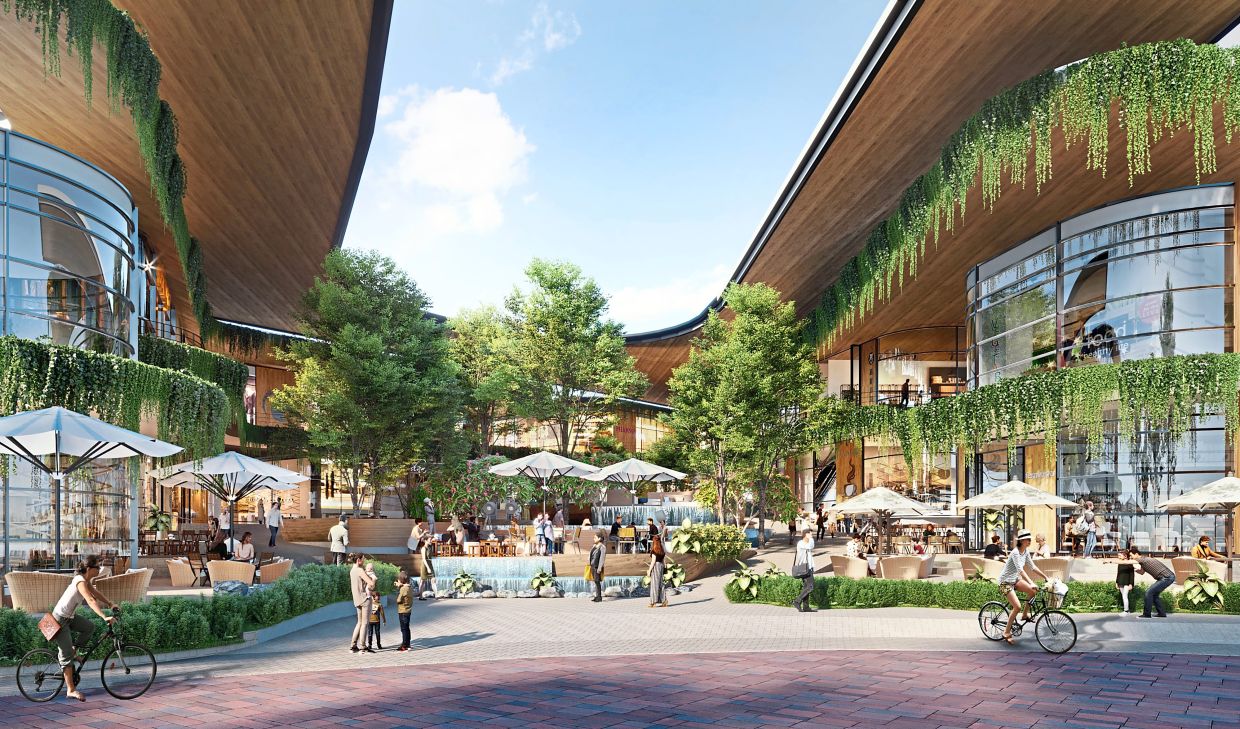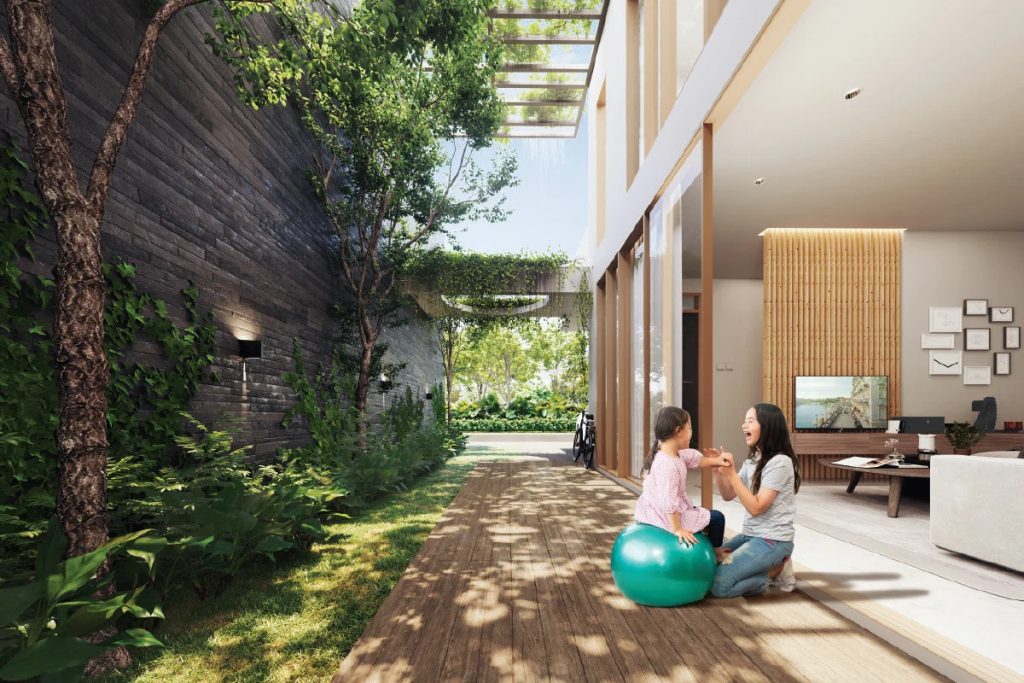
- About Us +
- Developments +
- Sustainability +
- Happenings +

Gamuda Land is embracing a more strategic approach to biophilic designs, says its general manager Devendran Krishnamoorthy.
Widely known for its sustainable, environmental movement, Gamuda Land is embarking on and adopting a more universal concept of biophilia across all its developments. “Our efforts are now more concerted, coordinated and concentrated across our various townships,” says Devendran.
“We intend to approach nature and biodiversity in the right way by incorporating the biophilic designs ahead of the upcoming launches in Gamuda Cove, Gamuda Gardens and twentyfive.7’s hero products, as well as our international projects, which include a new project at 272 Normanby Road in Melbourne, Australia.
“We will also continue to improve on all future hero and premium products. This will be [part] of our bread-and-butter design, regardless of whether they are residential or commercial properties. The [biophilic] design approach will be part of our DNA,” he says.
“Our climate change agenda has kept us a bit more focused [in terms of our goals and outcomes]. In 2021, the group shifted its strategies to further define environmental, social and governance (ESG), with a clear set of targets to map our path to the ‘green economy’,” he adds.
Devendran asserts, “We want to commit in areas where we can make the biggest impact when it comes to climate action. As a town maker, mindful master planning and good designs are where we can make a difference.
“One aspect of our development principle is ‘listening to what the land has to tell us’ in determining the development area — to minimise impact, increase biodiversity and improve the overall natural environment for flora, fauna and its inhabitants,” says Devendran.
“Our conscious effort to incorporate the biophilic design concept in our developments to reflect their natural surroundings helps to create a place that encourages people to explore the outdoors and take part in activities together with family and friends for a healthier lifestyle.”

Walk the talk
Under the first pillar of the Gamuda Green Plan “Sustainable Planning and Design”, the group aims to achieve a 40% reduction in carbon emissions by 2030.
“An aspect of this is through the sustainable master planning of shared facilities and green features. From that, we have introduced a series of biophilic design features to promote balance and peaceful living for our residents, which is also aligned with our sustainability efforts,” says Devendran.
He highlights, “We really do walk the talk on our green agenda and among the few proof points are that all our future developments will be green building certified. This includes international projects.
“In Malaysia, all our developments must have GBI (Green Building Index) accreditation; for example, our landed homes and high-rise residential [projects] will be at least GBI-certified. As for our commercial buildings (offices, malls, industrial and so on), they will have at least a GBI silver [rating],” he says. “In April, Gamuda Cove was recognised as the first 5-Diamond LCCF (Low Carbon Cities Framework) private township in Malaysia by the Malaysia Green Technology and Climate Change Corporation (MGTC).”
Other Gamuda Land projects that are recognised with equivalent certifications include Ola Residences in Singapore (with Green Mark), 272 Normanby Road in Australia (with Green Star) and Aldgate in the UK (via Breeam).

Benefits, key themes and challenges
Benefits are aplenty for biophilic designs. “It encourages a strong connection between people and nature,” says Devendran. He lists some of the core characteristics of such designs.
“Inside the house, design elements that improve ventilation reduce the need for air-conditioning units, while large windows that allow natural light to flood the room also offer a sweeping view of nature outside.
“For the outside, green spaces throughout the township help lower the overall temperature in the township, especially with the creation of urban forests, pollinator gardens, wetlands arboretum and more,” he adds.
Gamuda Land has also committed to plant #OneMillionTrees through the Miyawaki tree-planting method to create a dense forest. The Advanced Tree Planting programme, meanwhile, will support the development of 2,000 acres of greenscapes.
“Even from the early days, we have ensured that our developments are well planned with a central park for community building, sustainable landscaping and good township management, to name a few.
“Today, we have conducted surveys to collect feedback from our customers and understand their preferences. The key takeaway is, when selecting a new home, customers would prioritise the living and dining areas, followed by the bedrooms and then the kitchen,” says Devendran.
“We have also narrowed it down to four main themes: improving indoor air quality/natural lighting, bringing people closer to nature, incorporating flexible spatial features and integrating sustainable smart features.
“In addition, the pandemic has changed buyers’ expectations and perspectives on home designs. Nowadays, people prefer flexible layouts where they can work from home or even work near home (which we plan to incorporate).
“The recent devastating floods have also showed that we are in the right direction with our flood mitigation methods, such as sustainable drainage systems (SuDS). SuDS mimics Mother Nature’s system of drainage that allows rainwater to seep into the ground; channels the rainwater runoff into a waterbody like a river, pond or basin; provides water storage on site; and slows down the flow of water.
“We have also [implanted] urban forests in all our townships to act as a filter and slow down the surface runoffs, as well as restored wetlands such as the Paya Indah Discovery Wetlands in Dengkil, Selangor.”
Other elements include connectivity to essentials and leisure shops, parks and outdoor activities, while close proximity to public transport is another key consideration in the group’s master plan.
“Putting pedestrians, bicycles and water transport ahead of cars is a priority that goes hand in hand with the inception of e-buses, trams and rail networks to provide excellent green connectivity,” says Devendran.
The designs, however, come with certain challenges. “Delivering biophilic designs comes with a cost. It costs more to design and it costs more to build,” he explains.
“Large windows, large openings, skylights and double volume ceilings are typically more expensive to build compared with the standard fitments in conventional homes, which are the norm in the industry.”
To keep costs under control, the developer plans to make use of the digital Industrialised Building System (IBS). “[It] will be the future of construction with robotic automation. This will reduce manpower by 60% and is faster by 40% compared with conventional construction. The controlled environment in Gamuda Digital IBS is superior to on-site set-ups, reducing wastage to less than 1%.”
Devendran says, “With digital IBS, we will be able to produce products with customisable designs such as multi-façade link homes and products with biophilic designs. And as part of the Gamuda Green Plan, we will be adopting 100% digital IBS across landed and high-rise developments.”
In the long term, the group remains committed to its grand, green agenda. “We can’t keep doing things as we have done in the last 50 years. We have to move towards a more sustainable agenda. As a town maker, if we do not address climate change, what kind of legacy would we be leaving for our children and grandchildren? There is no other alternative.”